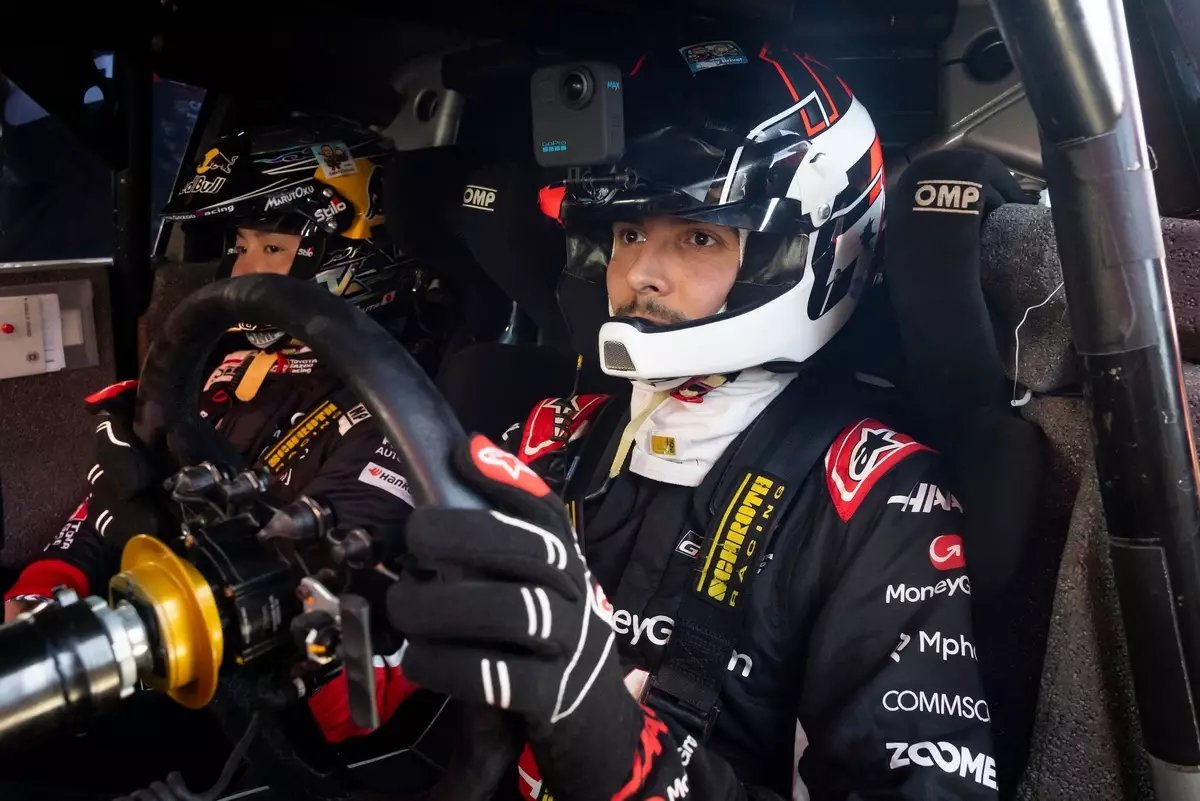In the high-octane world of motorsport, where skill and technology often dominate narratives, the human element—dreams, passion, and ambition—remains an irreplaceable force. Esteban Ocon’s recent exhilarating experience behind the wheel of a WRC car at the Goodwood Festival of Speed epitomizes this truth. It is not just a story about driving a rally car; it is about the fulfillment of a lifelong dream that transcends categories and promises to redefine the boundaries of a racing driver’s aspirations. Ocon’s story resonates because it taps into a universal desire: to pursue passions relentlessly and to embrace opportunities, even when they stretch beyond one’s usual realm.
The connection between Ocon and Toyota exemplifies how strategic partnerships in motorsport can serve as platforms for human achievement. It underscores the importance of nurturing curiosity and ambition within teams, fueling drivers with experiences that elevate their appreciation for automotive engineering and racing disciplines. Yet, this event is more than a fleeting highlight; it signals the potential to inspire future generations, challenging the perception that talent in one racing category confines drivers to a narrow path. Ocon’s reflection on his childhood dream—owning a WRC car and driving it daily—illustrates the profound power of passion and how it can ignite new ambitions, even for seasoned professionals.
From F1 to Rally: Challenging Limits and Reframing Possibilities
What sets Ocon’s rally experience apart from typical driver encounters is the sheer authenticity and emotional significance attached to it. It was not merely an eye-catching stunt for publicity, but a genuine foray into an entirely different motorsport universe. His admiration for the engineering marvels of Rally1 cars reveals an appreciation that borders on reverence, recognizing how these vehicles are delicately balanced prototypes designed for both extreme performance and road legality. His comments about how intuitive and well-crafted the vehicle felt highlight a nuanced understanding that bridges his expertise in Formula 1 with the intricacies of rally machinery.
Ocon’s reaction to the car’s handling, especially the ease of operation—such as the straightforward handbrake, smooth steering, and immediate throttle response—exposes a truth often overlooked: racing disciplines, despite their differences, share core principles of vehicle dynamics and driver skill. This crossover recognition enriches our understanding of what it means to be a versatile driver and suggests that skills gained in one arena can significantly impact performance and passion in another. It also opens up a provocative question: could drivers like Ocon, and perhaps others in F1, forge successful careers or simply diversify their experience bases by exploring rallying or other motorsport forms?
Furthermore, the thrill of jumping into a side seat alongside Katsuta exemplifies the pure visceral excitement that rallying delivers—a stark contrast to the precision, control, and aerodynamics that define F1. Ocon admits that what amazed him most was witnessing the car’s grip and engineering mastery firsthand. His remark about the car feeling like a prototype underlines how rally cars are the epitome of engineering innovation, blending advanced technology with raw performance—a realization that broadens his appreciation for automotive craftsmanship.
Reshaping the Motorsport Narrative: Beyond the Limits of Category Boundaries
Ocon’s openness about engaging in rallies for fun, even contemplating future test drives, is a courageous departure from the often rigid specialization encouraged in professional racing circles. It signifies a shift towards a more holistic view of motorsport—one where skills and passions are fluid rather than compartmentalized. His statement that he might pursue rallying “for fun” after his F1 career reveals a desire to keep the spirit of experimentation alive, inspiring fans and fellow drivers alike to embrace a broader spectrum of automotive pursuits.
There is a powerful message embedded here: the pursuit of excellence in motorsport should not be confined by traditional boundaries. The industry’s future may depend on encouraging versatile talent—drivers who view their craft as a lifelong journey of exploration rather than a narrow path dictated by discipline. Ocon’s experience emphasizes that age, category, or specialization do not have to limit a driver’s curiosity; instead, they can serve as an invitation to innovate, learn, and grow.
While some might see this as a mere curiosity or publicity stunt, the genuine enthusiasm Ocon displays demonstrates how personal dreams can influence professional journeys. His heartfelt recounting—waking up with excitement, recalling childhood ambitions—reminds us that motorsport is ultimately about passion. The potential for drivers to expand their horizons could catalyze a new era where motorsport is less about competing within fixed brackets and more about celebrating a multifaceted love for driving and engineering excellence.
In essence, Ocon’s transformative experience serves as a compelling narrative for motorsport’s evolving identity—one rooted in passion, curiosity, and the relentless pursuit of personal dreams. It challenges us to reconsider what is possible and encourages current and future drivers to seek adventures beyond their immediate horizons.


Leave a Reply